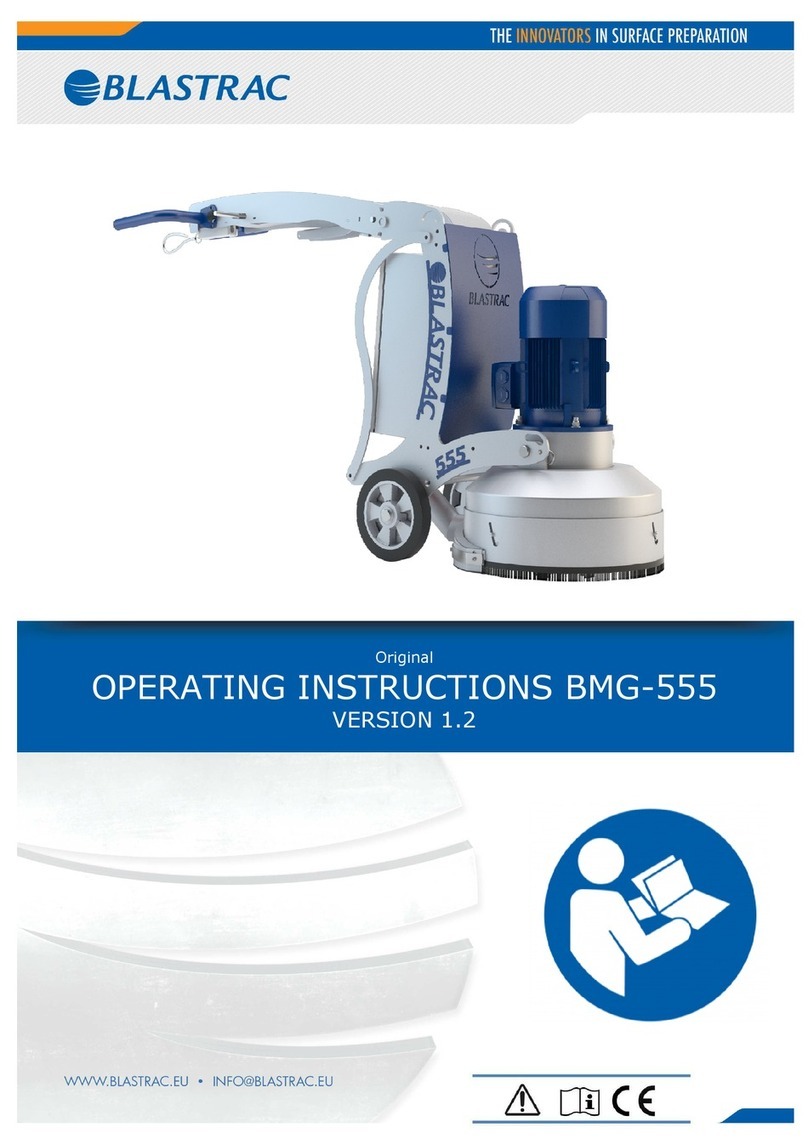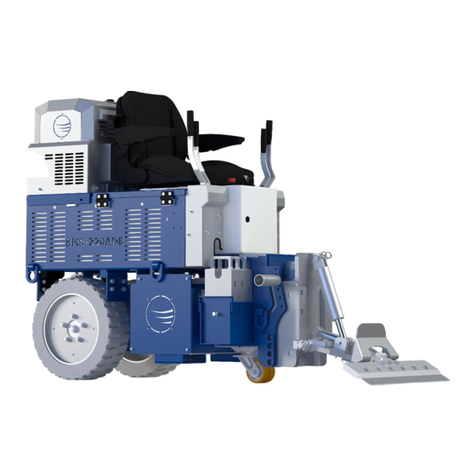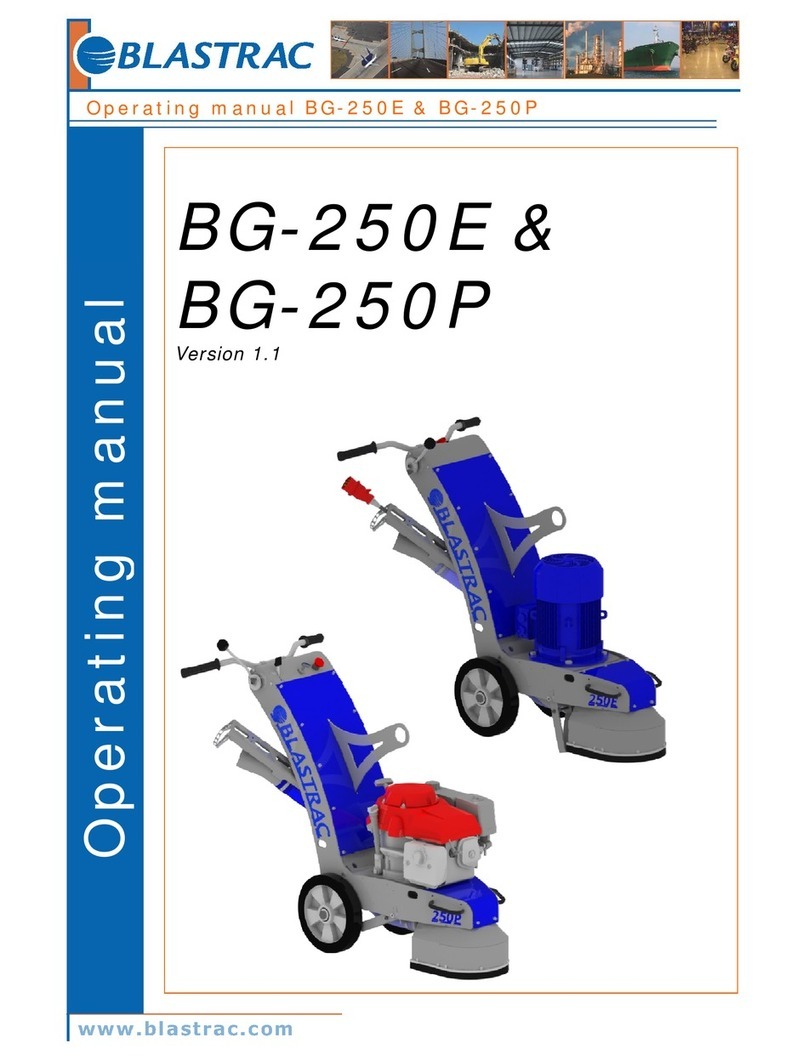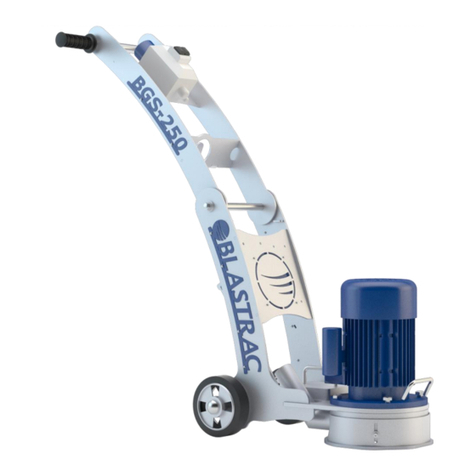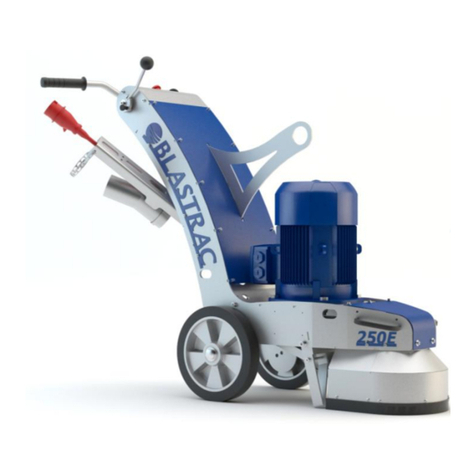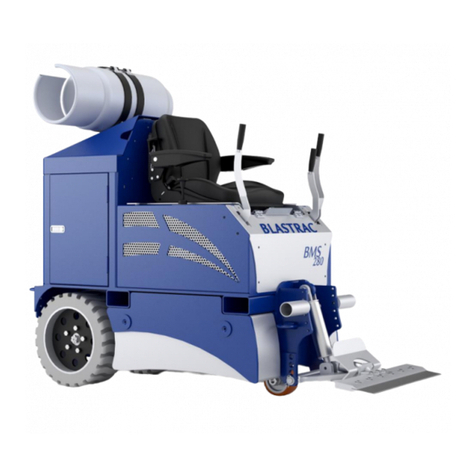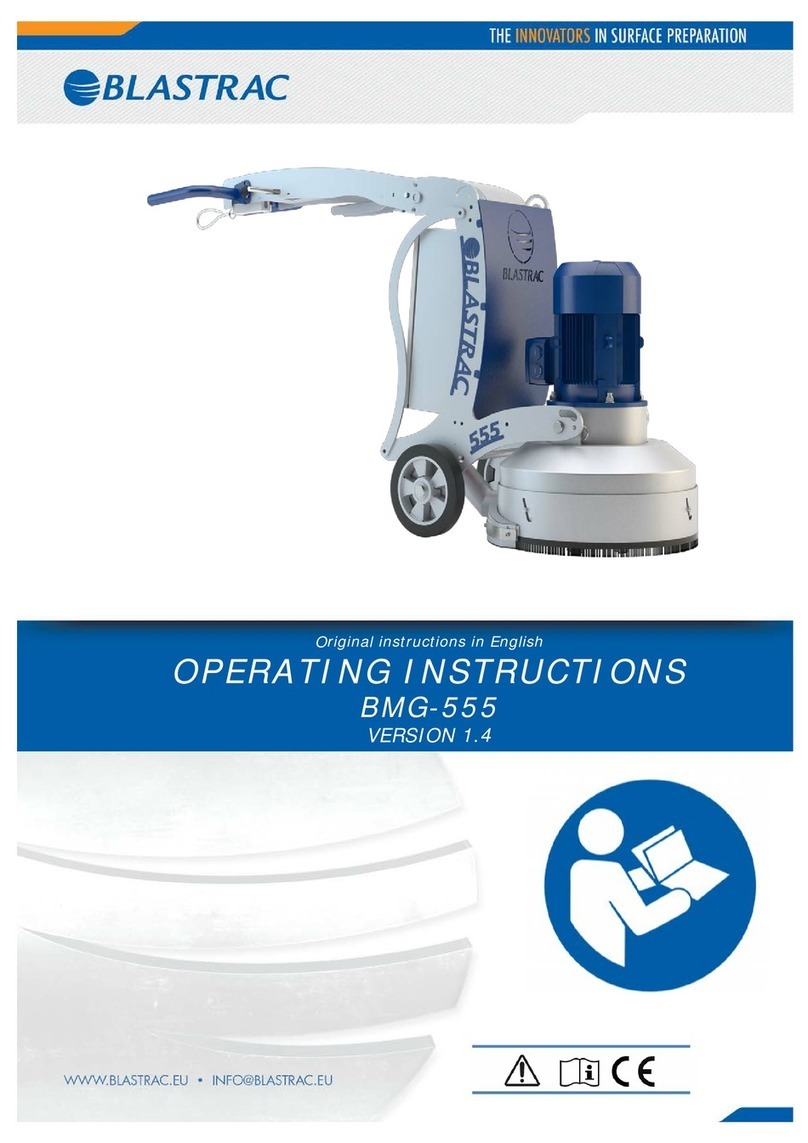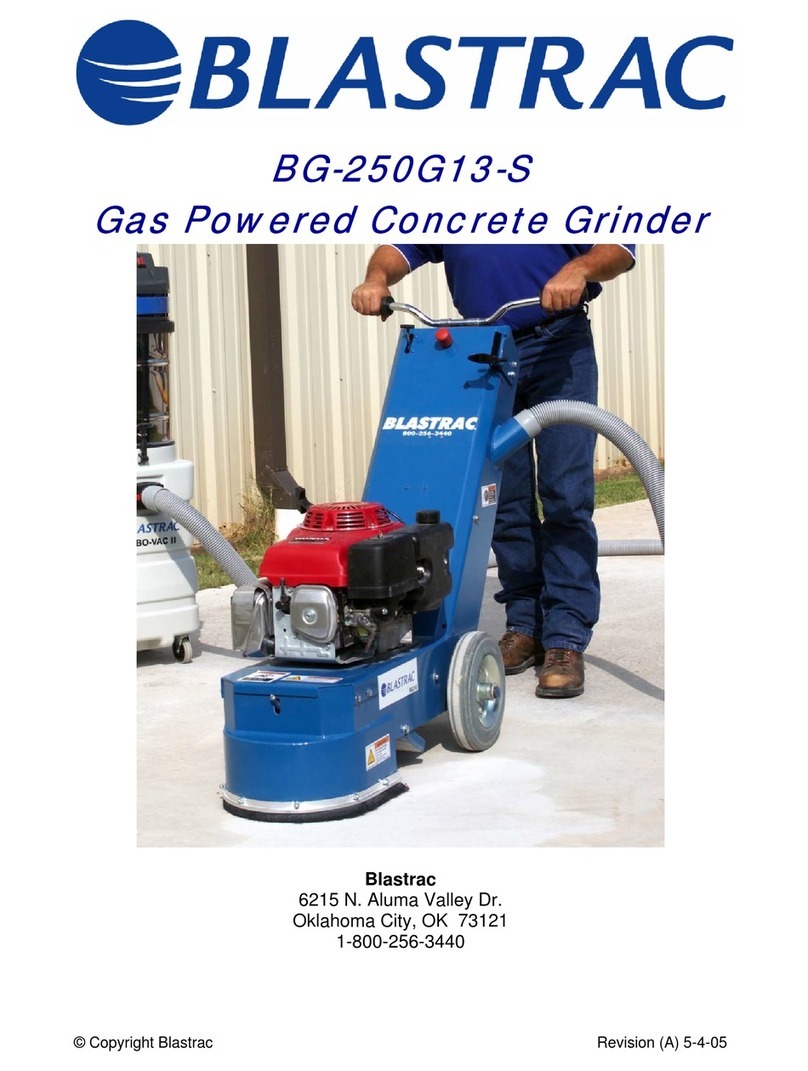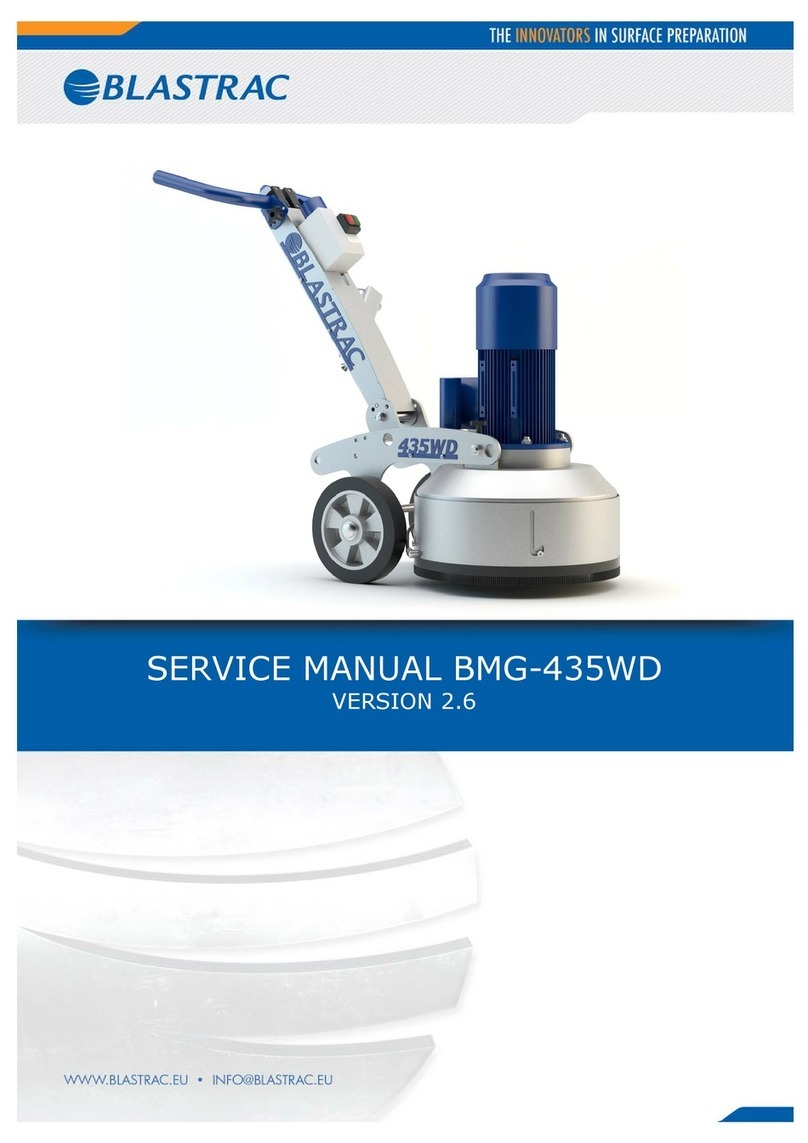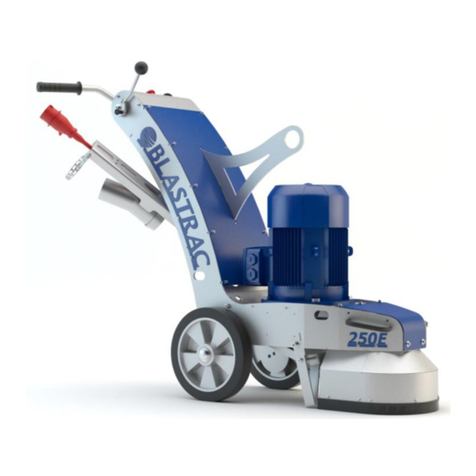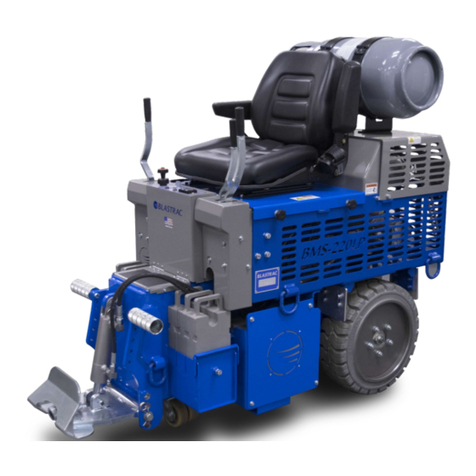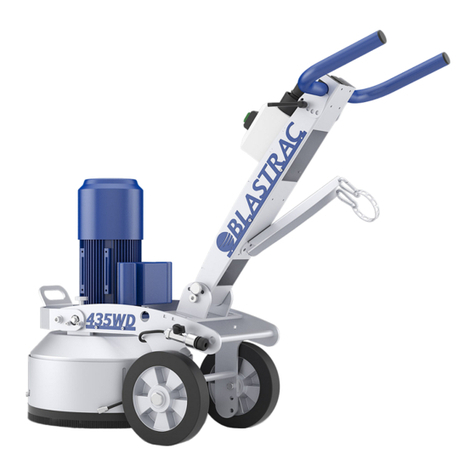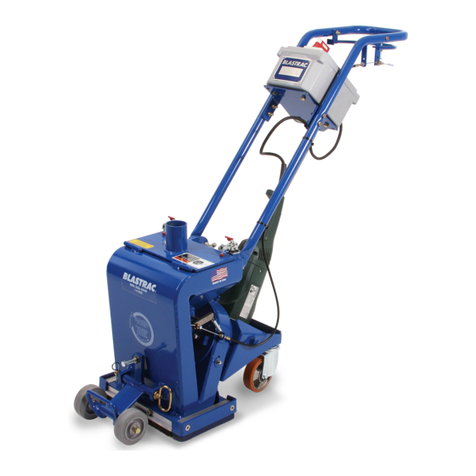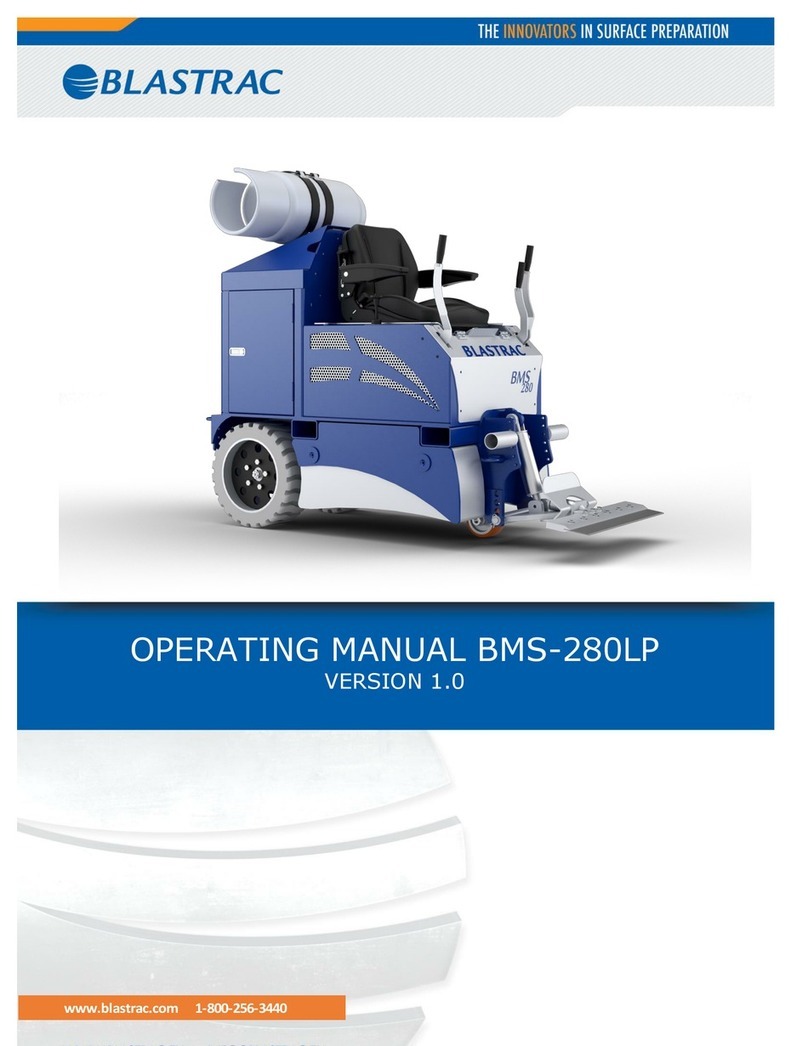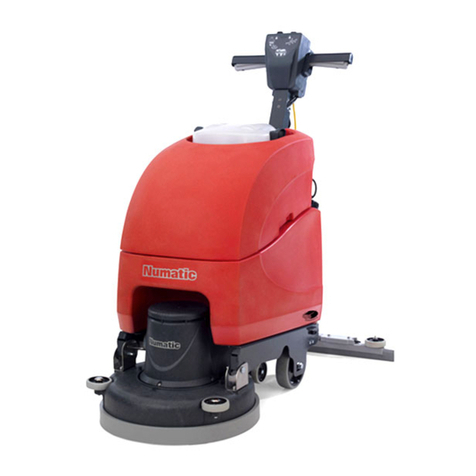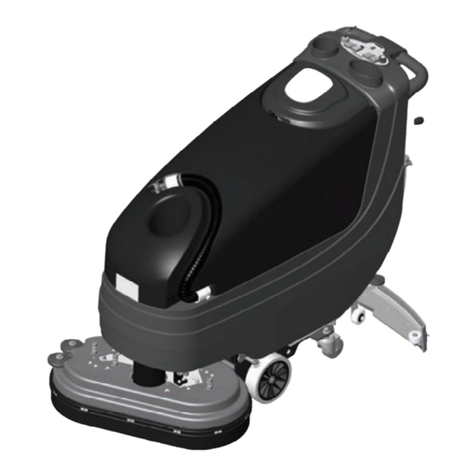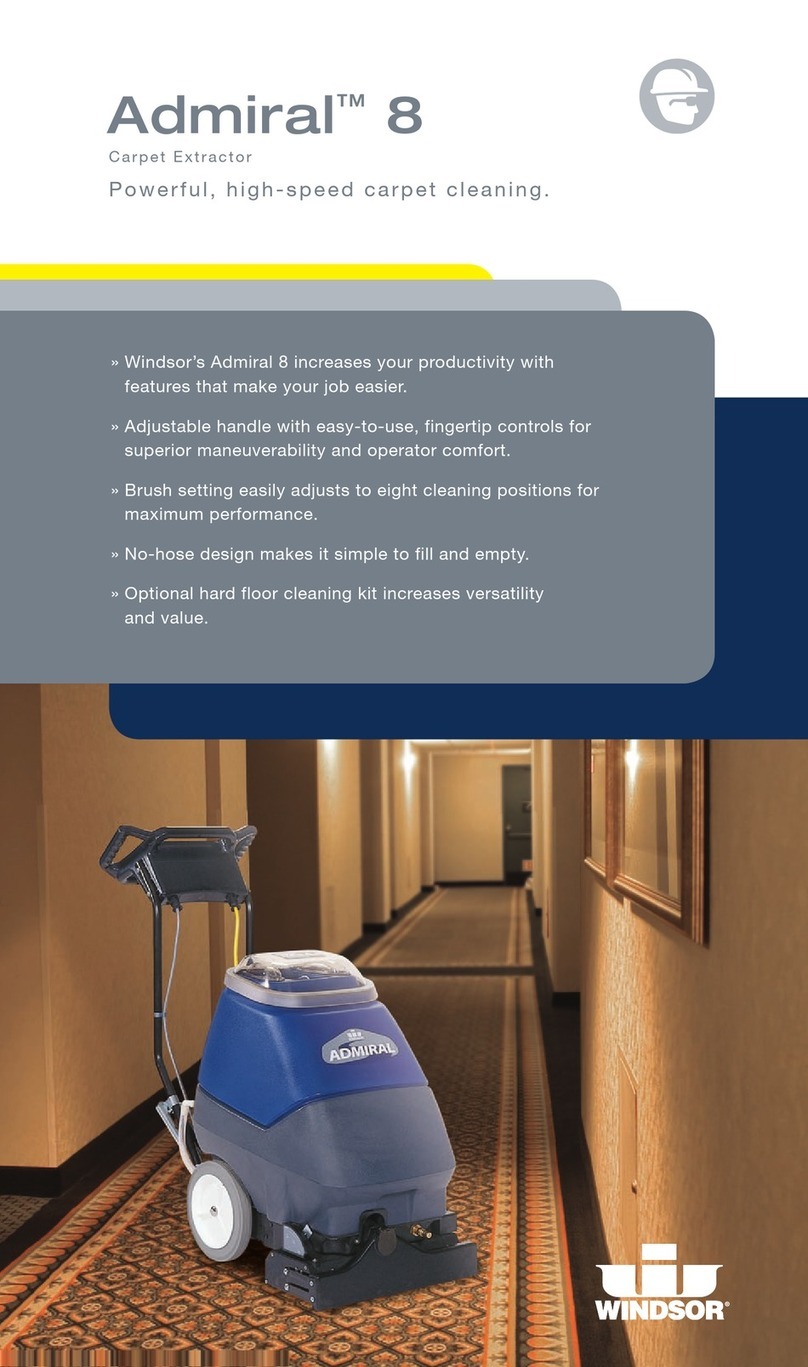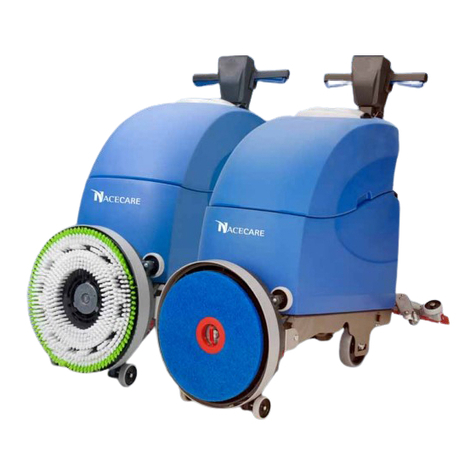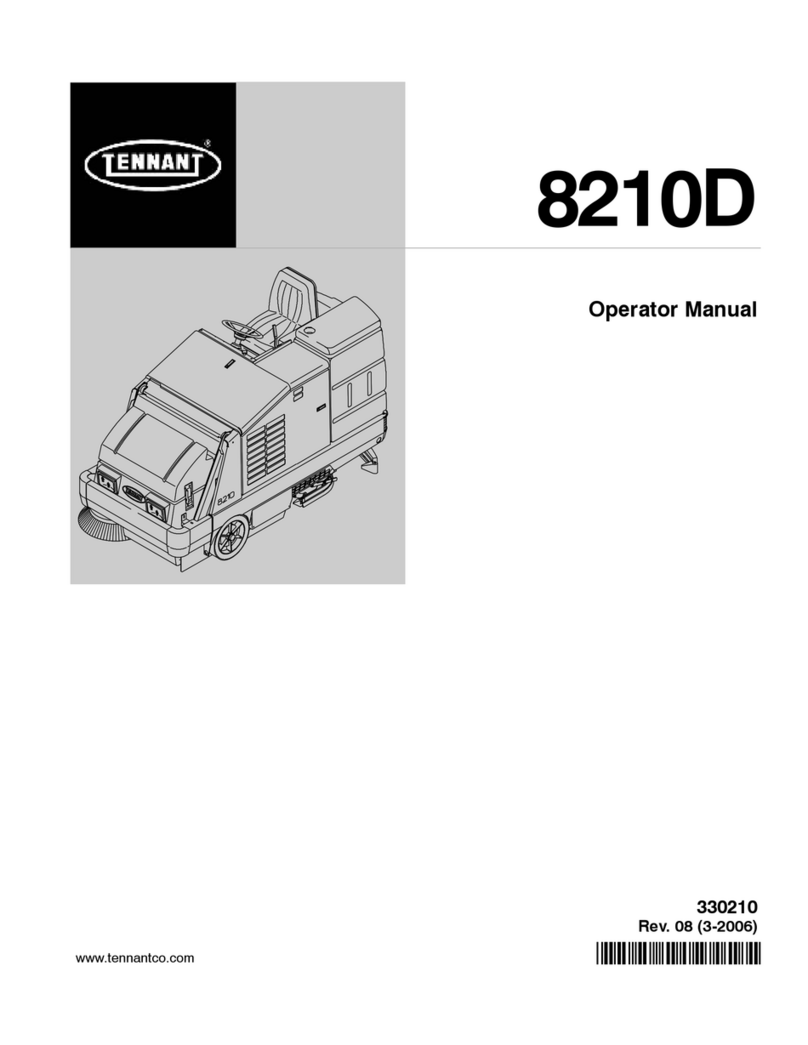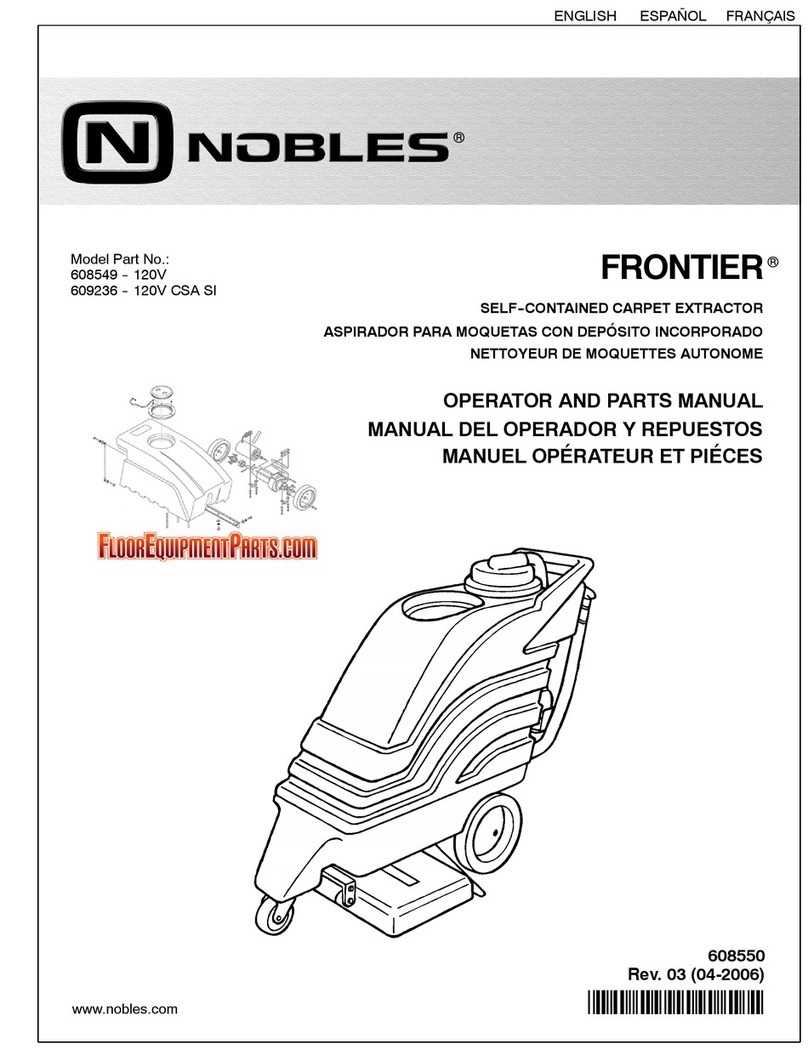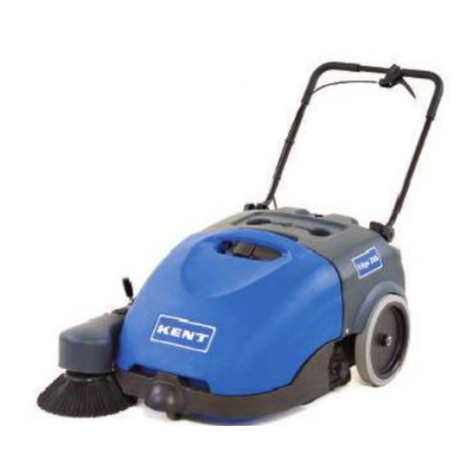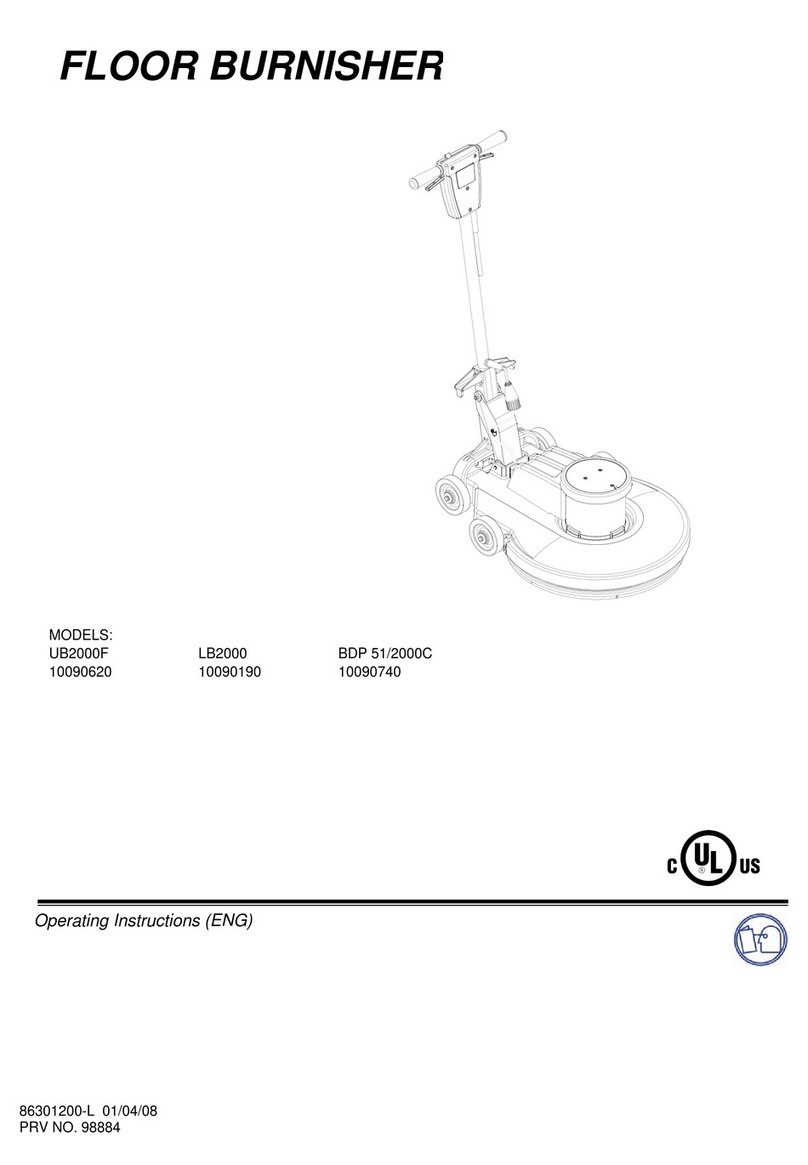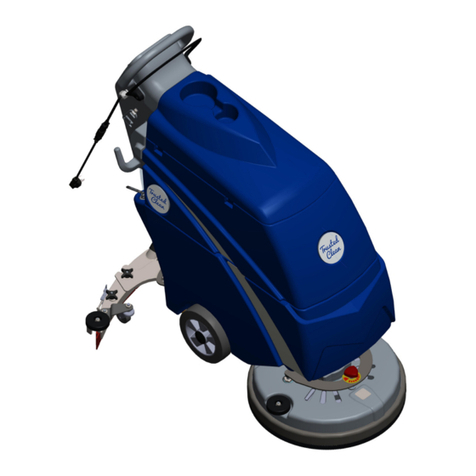8
3.7 Asbestos safety
a) Always check and comply with the local authorities and regulations!
b) Employees that are responsible for the execution of the asbestos removal must be trained and certified
accordingly.
c) Operators and other third parties that are involved in asbestos removal and in that context are present in
the work area must have sufficient knowledge of the risks with respect to asbestos.
d) Such persons must (according to the labour regulations) proven to be instructed (information and
education) about the health risks of working with (or at) asbestos (removal) and the measures for
personal protection with regard to possible exposure to asbestos.
e) The operator must know the usual procedures when leaving the working area, including the visual
inspection en cleaning of the machine being used.
f) The operator must use respiratory protection which is sufficient for work with asbestos, and must have
knowledge of the correct HEPA filters that are to be used.
g) If there is a possibility that asbestos fibres are released, they shall be collected at the exit or point of
origin and then be disposed of without risk to human and environment according to the local regulations.
h) If it is not possible to completely collect the contaminants, additional ventilation and filtration measures
must be taken.
i) At the end of work the complete machine including the dust collector, tools, work equipment and the work
area must be carefully cleaned according to local regulations.
j) Objects contaminated with asbestos fibres that cannot be cleaned must be moistened and eliminated
properly. After cleaning the work area must be adequately ventilated.
k) Extracted air must be guided and cleaned so that asbestos fibres are not released into the breathing air of
other employees.
l) The dust produced and collected must be transported in dustproof containers. Decanting is not permitted.
m) The extracted air which is released back into the outside air may not exceed a fibre content of 1000 F/m³.
n) The dust collector must be a type-approved industrial vacuum cleaner or dust collector with HEPA filter
and meet this criterion.
o) It must be ensured that the working area is supplied with sufficient outdoor air (fresh air).
p) For activities involving materials containing asbestos, a recirculation of purified air in the work area are
not allowed. The following activities with the industrial vacuum cleaner or dust collector recirculation of
purified air are permitted: 1: Activities involving low exposure according to TRGS 519, Number 2.8
confined spaces or small-scale work to TRGS 519, Section 2.10, and 2: cleaning.
q) the outside of the machine should be decontaminated by cleaning and vacuuming methods, de-dusted
before being taken out from the hazardous zone. All parts of the machine must be considered as
contaminated when they are removed from the hazardous zone and appropriate actions must be taken to
prevent dust from dispersing.
r) The machine is to be serviced and cleaned, as often as is required, but at least once a year, and if
necessary, repaired by a competent person (see qualification TRGS 519, Number 5.3, paragraph 2) and
checked by a maintenance company. The test result must be provided on request.
s) The machine and dust collector used in the black area may only operate in the white area after complete
cleaning, including the motor housing. For engines with bypass cooling the cooling air ducts have to be
clean.
t) When maintenance or repair procedures are carried out, all the contaminated elements that cannot be
properly cleaned, must be destroyed.
u) These elements must be disposed of in sealed bags according to the applicable regulations and in
accordance with the local laws governing the disposal of such material. This procedure must also be
followed when the filter has to be disposed.
3.8 Maintenance safety
a) Pull out the main plug and place it in sight, before starting inspections and repairing on the machine.
b) Wait for standstill of all drives before any inspections, adjustments and/or maintenance work is started.
c) Block machine in stable position before doing any maintenance work.
d) Failures due to inadequate or incorrect maintenance may generate very high repair costs and long
standstill periods of the machine. Regular maintenance therefore is imperative.
e) Operational safety and service life of the machine depends, among other things, on proper maintenance.
f) Prevent premature wear by keeping the machine as dust free as possible. Clean the machine for this
reason regularly with a dust collector and non-aggressive materials. Never use a high pressure water
cleaner to clean the machine.
g) Do not use any aggressive cleaning materials!
h) Use lint-free cleaning cloths!
